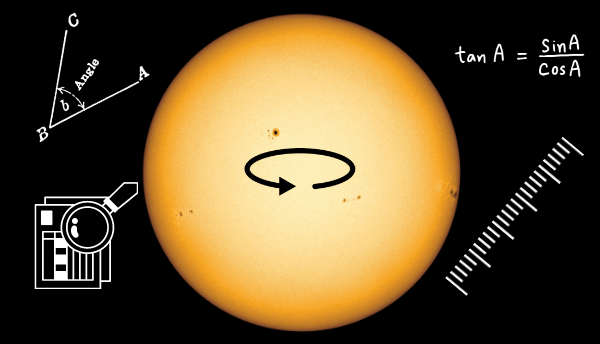You may know that the Earth rotates around an axis, but did you know the Sun does too?
So how long is a solar day? In this activity, you will find out!
Look at and analyse real data from sunspots on the Sun. The data comes from the Solar Dynamics Observatory. You will use the data (and some maths) to estimate how long it takes the Sun to rotate once around its axis.
By the end of this activity you will:
- Have used real data from the Solar Dynamics Observatory
- Have observed and measured the position of a sunspot over time
- Used your measurements to calculate how long it takes the Sun to rotate
- Compared your results with the true value
To complete this activity you will need:
- Downloads or printouts of the data (PDF)
- A ruler
- A scientific calculator (with trigonometric functions)
- Something to record your results and working out (e.g., tablet, laptop, notebook, and pen)
Approx Duration
30 - 60 mins
Have a go!
- Work through the slides below to complete the investigation.
- Click on the arrows at the bottom right to view the slides in full-screen mode.
- Use the arrows on either side of the slide number to navigate through the slides.
- Have a pen and paper ready to make notes and record your results.
If you liked this, why not try

NSO Language
English
Locked Content
Yes
CPD for teachers flag
No
